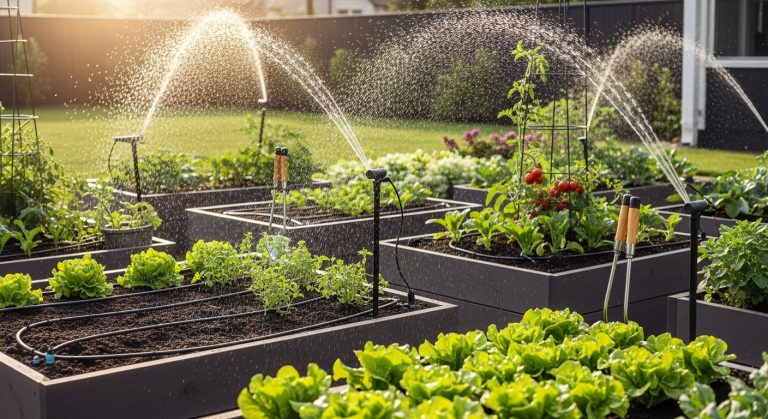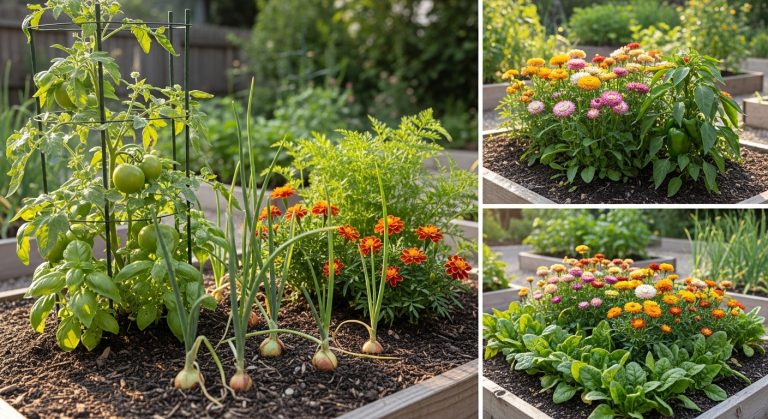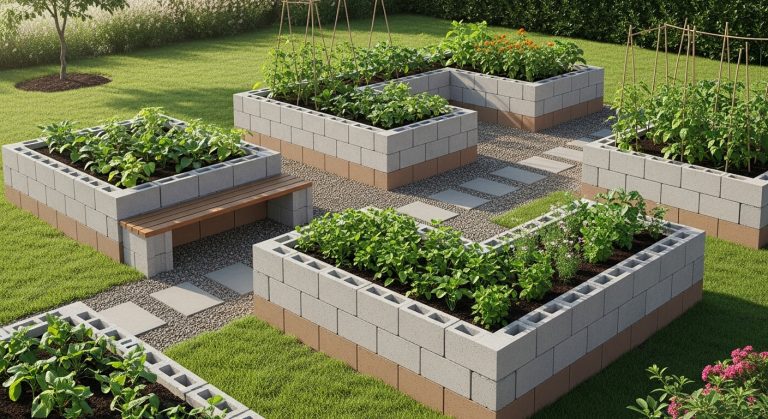Victorian Front Garden Ideas: 15 Elegant Designs to Bring Back Timeless Charm
Ever walked past a Victorian terrace and thought, “Wow, that garden looks like something out of a period drama”? I know I have—more than once. Victorian front gardens carry this undeniable charm that feels both romantic and structured, a perfect mix of order and whimsy. They aren’t just about flowers, though. They’re about symmetry, detail, and making a killer first impression before anyone even rings the doorbell.
I’ll be real with you—my first attempt at copying Victorian front garden ideas was a total flop. I planted random roses and some iron fencing and thought I nailed it. Spoiler alert: I didn’t. But after studying what actually works, I’ve realized that creating a Victorian-style front garden is less about copying and more about layering traditional elements with a touch of personality.
So let’s walk through 15 ideas, each with pros, cons, and a bit of personality. Ready to make your front yard the envy of your street? Let’s go.
1. Symmetrical Layouts
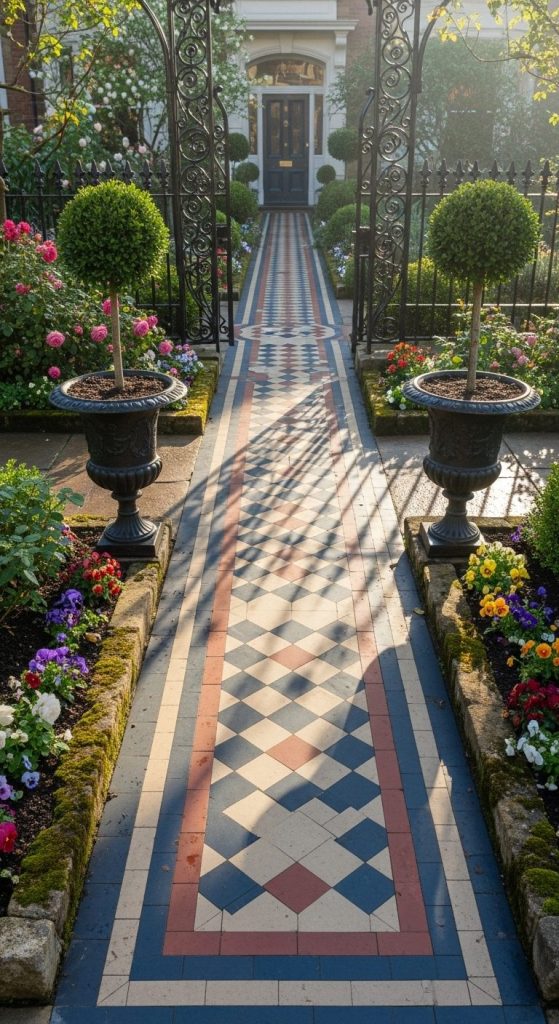
Victorians loved order. Symmetry was everywhere—front doors, window frames, and yes, the gardens.
Pros:
- Instantly adds formality and elegance.
- Easy to design once you get the hang of mirroring.
- Creates a welcoming and balanced look.
Cons:
- Can feel stiff if not softened with planting.
- Needs regular maintenance to stay crisp.
Ever wondered why old homes look so “put together”? It’s symmetry. Even two identical planters by the gate can nail the look.
2. Cast Iron Railings

Victorian front gardens often had ornate iron railings to separate public from private.
Pros:
- Adds instant authenticity.
- Durable and long-lasting.
- Can be painted to match house trim.
Cons:
- Can get pricey.
- Needs rust protection over time.
FYI: A Houzz design report noted that decorative fencing boosts curb appeal by up to 20%. Translation? Iron railings aren’t just pretty; they’re smart.
3. Victorian Tiles for Pathways
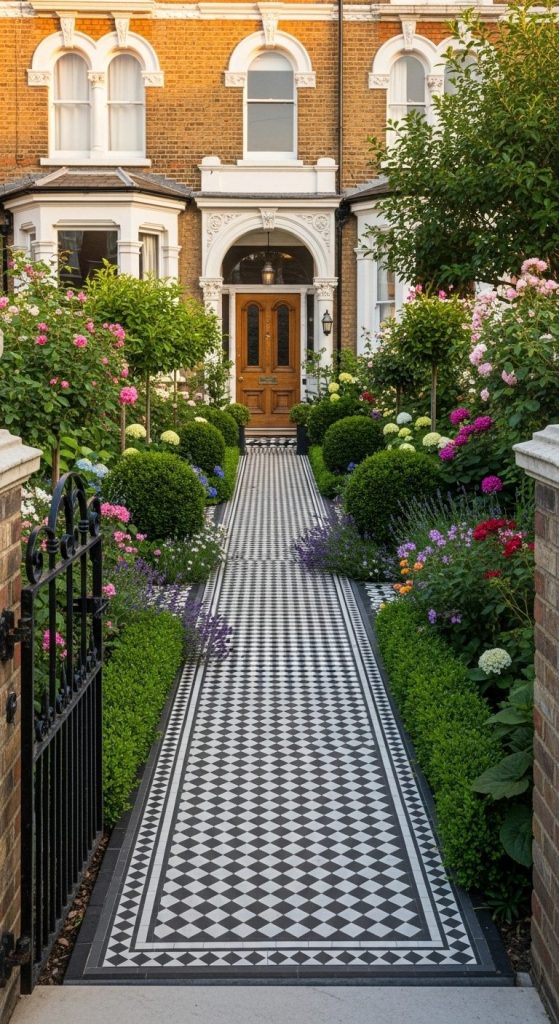
A tiled path leading up to the door screams “classic.”
Pros:
- Timeless visual impact.
- Easy to clean.
- Boosts property value.
Cons:
- Installation can be expensive.
- Slippery when wet if untreated.
I once visited a friend’s house with black-and-white mosaic tiles on the path. I honestly spent more time admiring the ground than the door—no shame.
4. Classic Rose Bushes

What’s a Victorian garden without roses?
Pros:
- Elegant blooms in many colors.
- Strong historical ties.
- Fragrant and inviting.
Cons:
- Needs pruning and care.
- Prone to pests if neglected.
Fun fact: According to the Royal Horticultural Society (RHS), roses remain the UK’s most planted garden flower. Coincidence? Nope.
5. Evergreen Topiary
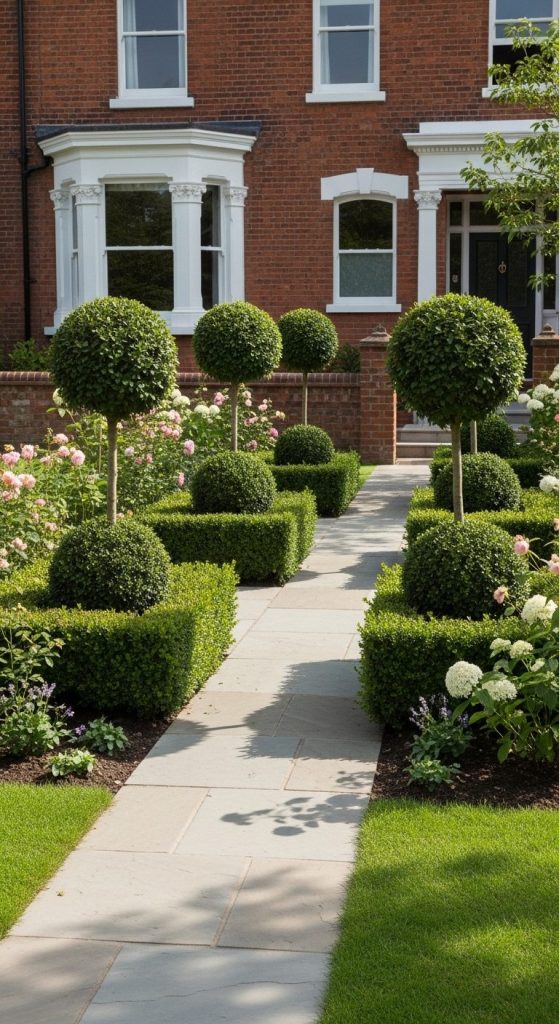
Victorians adored clipped hedges and neat box balls.
Pros:
- Year-round structure.
- Adds formality and order.
- Can frame pathways beautifully.
Cons:
- Needs frequent trimming.
- Box blight can be an issue.
Topiary feels like the “garden haircut” that never goes out of style. Ever tried shaping one? Let’s just say mine looked more like a lopsided potato.
6. Ornamental Urns and Planters
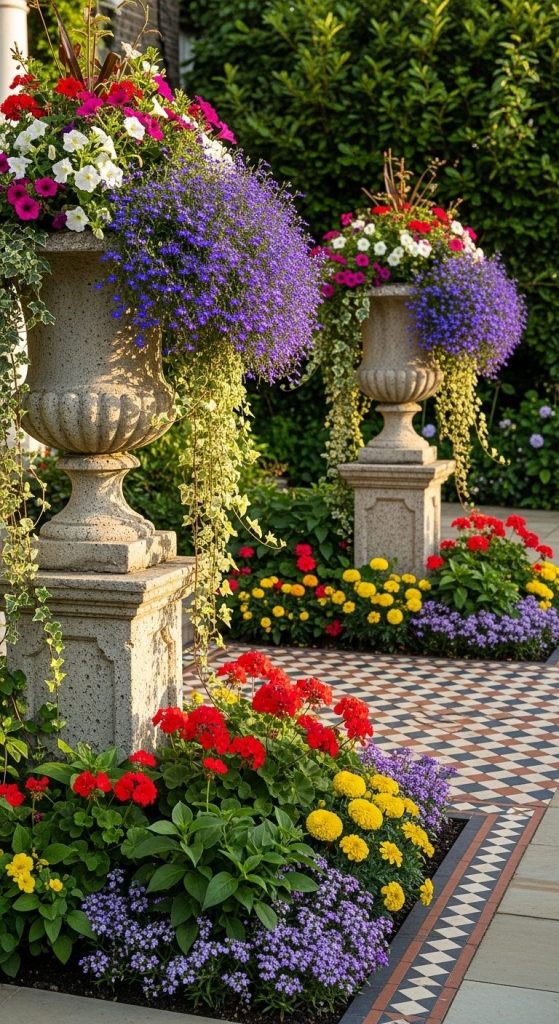
Stone urns with cascading flowers? Classic Victorian drama.
Pros:
- Adds height and interest.
- Moveable focal points.
- Works for seasonal planting.
Cons:
- Heavy to move.
- Stone ones can be pricey.
Urns basically say, “Yes, my garden is extra—and I’m proud of it.” 🙂
7. Victorian Garden Benches
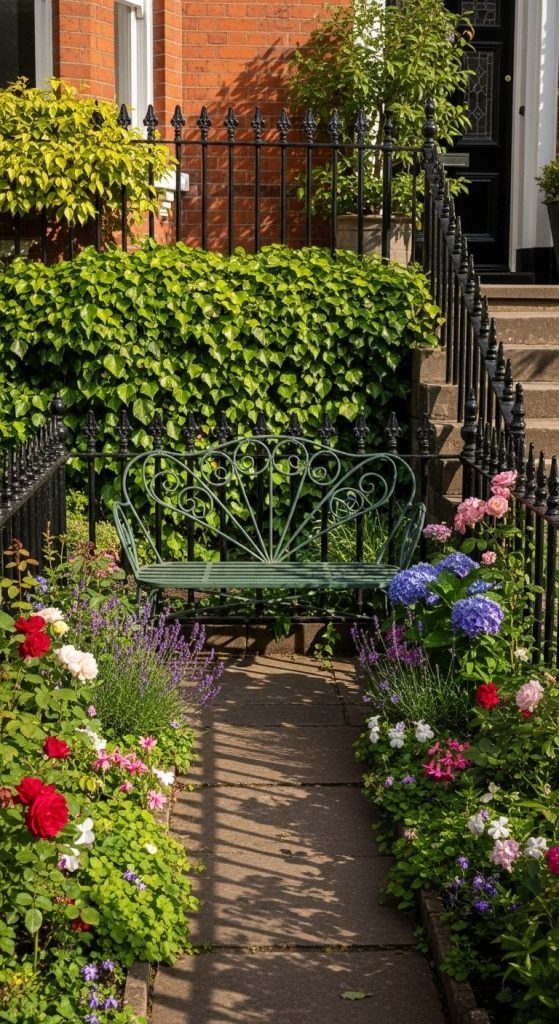
Iron or wooden benches tucked in corners.
Pros:
- Functional seating.
- Adds period detail.
- Complements railings or gates.
Cons:
- Iron benches can rust.
- Wooden ones need weatherproofing.
A bench isn’t just for sitting—it’s for showing off. Admit it, you’d Instagram it.
8. Flower Borders Along Paths
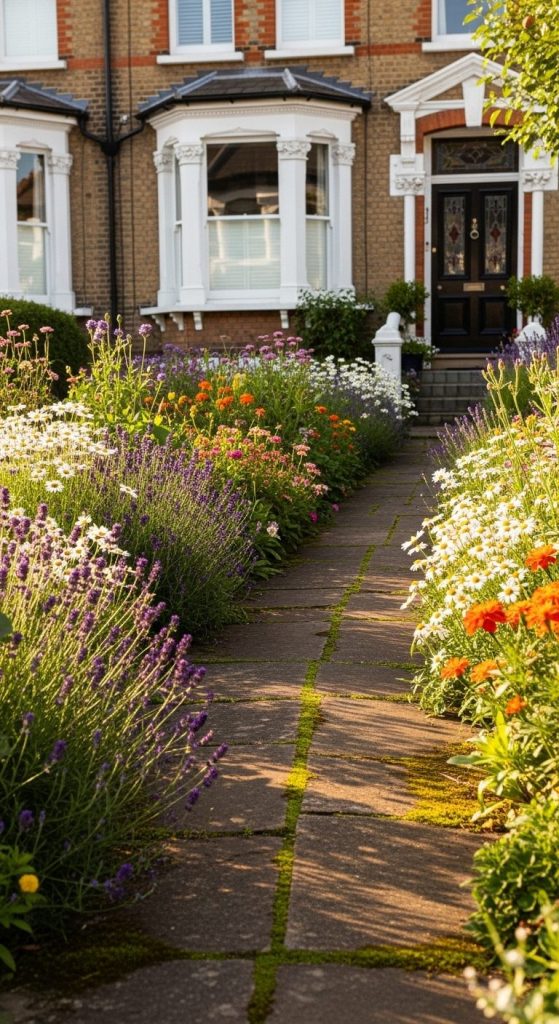
Victorians loved lined flower borders.
Pros:
- Frames walkways.
- Adds pops of color.
- Creates a softer feel against symmetry.
Cons:
- Needs replanting for seasonal impact.
- Requires weeding and edging.
Picture daisies or lavender edging your tiled path—instant drama without the Netflix subscription.
9. Bay Trees in Pots

Formal, neat, and very Victorian.
Pros:
- Easy to maintain.
- Evergreen year-round.
- Looks great in pairs by doors.
Cons:
- Vulnerable to pests like bay sucker.
- Pots can dry out fast.
I once placed two bay trees at my gate, and suddenly neighbors thought I’d “renovated” the whole house. Win.
10. Victorian-Inspired Lighting

Lantern-style lights mounted on walls or posts.
Pros:
- Enhances evening curb appeal.
- Adds safety along paths.
- Authentic to the period.
Cons:
- Needs wiring and installation.
- Outdoor bulbs need replacing.
Let’s be real—nothing kills the vibe like a bright LED floodlight. Go vintage.
11. Seasonal Bedding Plants
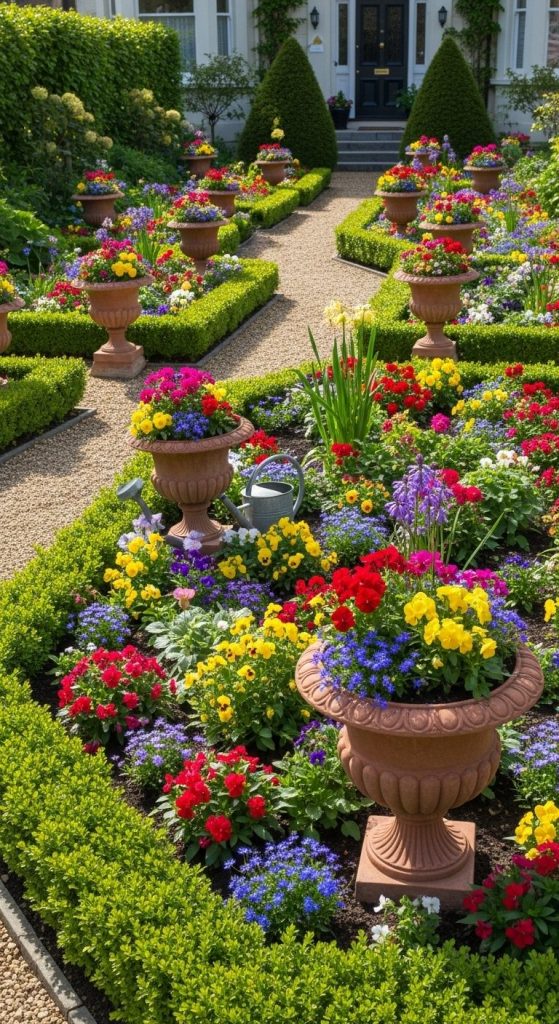
Victorians loved bold, rotating flower displays.
Pros:
- Fresh look each season.
- Endless color options.
- Makes the garden feel lively.
Cons:
- Can be labor-intensive.
- Ongoing cost for new plants.
Statista reports seasonal plant sales spike by over 35% each spring—guess who started the trend? Yep, Victorians.
12. Decorative Garden Gates

Ornate gates were often the crown jewel.
Pros:
- Defines the entryway.
- Adds security.
- Matches railings beautifully.
Cons:
- Needs regular repainting.
- Can squeak if neglected.
A Victorian gate doesn’t just open—it greets you like a butler from Downton Abbey.
13. Victorian Lawns
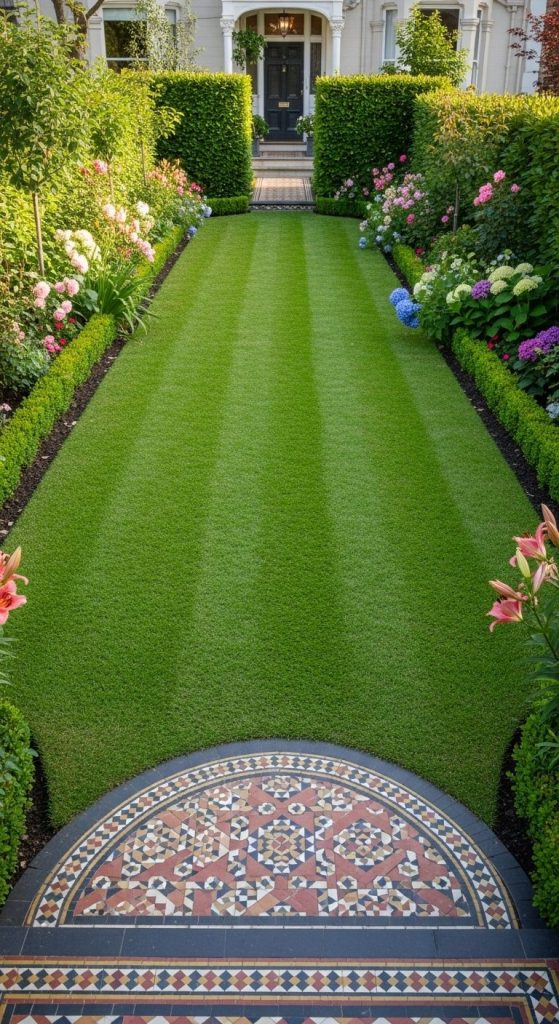
Small but well-kept lawns front and center.
Pros:
- Clean, classic look.
- Softens hard features.
- Easy to use as a “canvas” for borders.
Cons:
- Needs mowing.
- Can brown in dry spells.
A patch of green makes everything else pop. Trust me, even tiny lawns work.
14. Climbing Plants on Walls
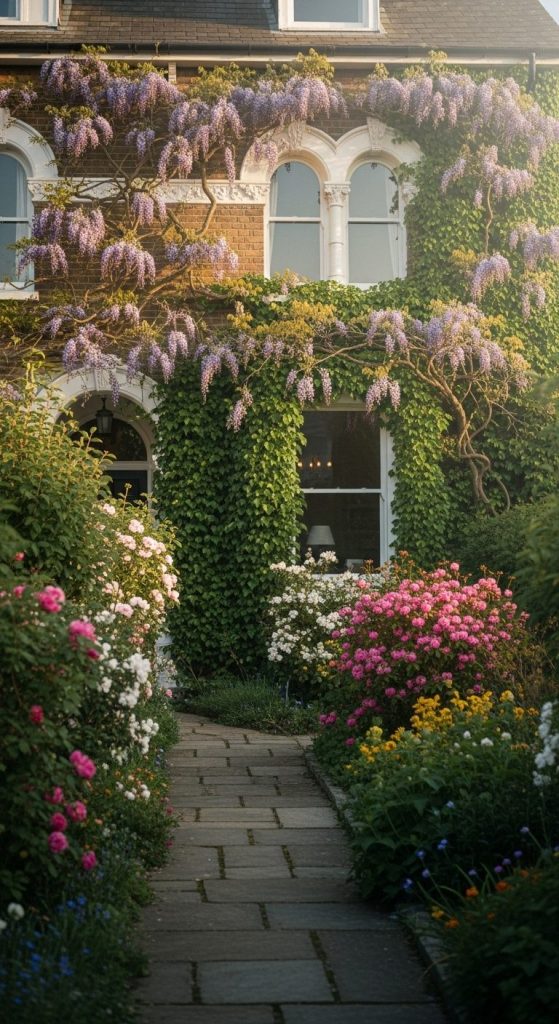
Think ivy, wisteria, or climbing roses.
Pros:
- Adds romance instantly.
- Covers plain brick or stone.
- Provides seasonal interest.
Cons:
- Ivy can damage mortar.
- Needs guiding and pruning.
Ever walked under wisteria in bloom? It’s like walking through a dream.
15. Victorian Birdbaths

Small, ornate birdbaths were common features.
Pros:
- Attracts birds.
- Adds charm and authenticity.
- Easy to install anywhere.
Cons:
- Needs cleaning.
- Can crack in frost.
Birdbaths are like the cherry on top of a Victorian sundae. Small but mighty.
Conclusion
And there you have it—15 Victorian front garden ideas that can turn your home into a timeless showpiece. Whether it’s iron railings, tiled paths, or rose bushes, these elements bring together order, romance, and authenticity.
So, what’s your first step? Maybe a pair of bay trees, or perhaps a tiled path if you’re feeling fancy. Either way, one thing’s for sure—your neighbors are about to get jealous.

Ashley Ellison is a skilled writer and avid bowler. Her passion for storytelling and dedication to the sport have led her to participate in various national bowling leagues. With a unique combination of talents, Ashley approaches every challenge with creativity and a relentless drive to succeed.



